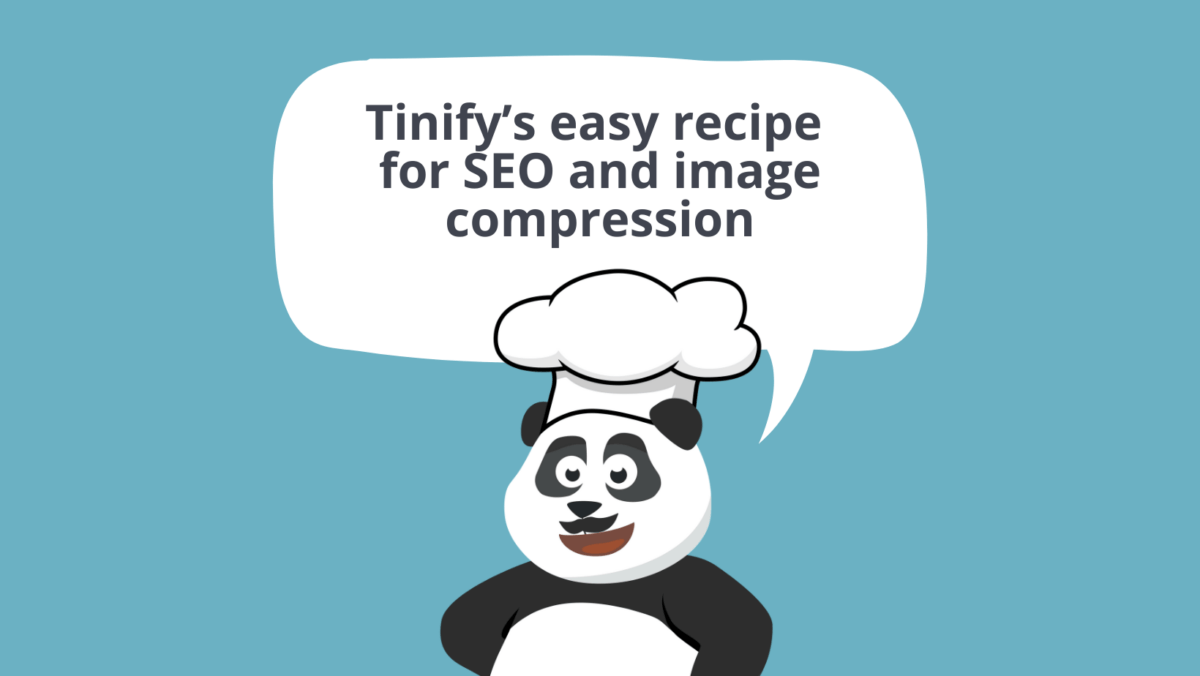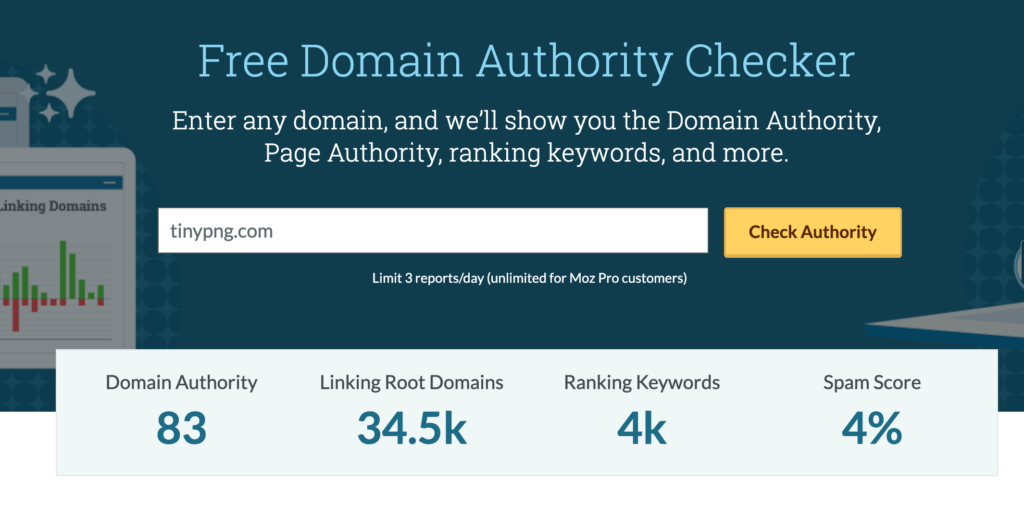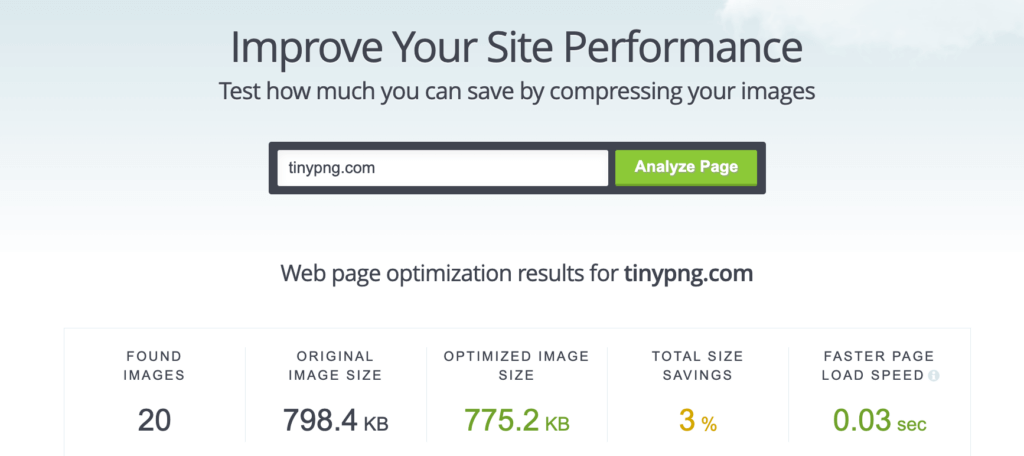Tinify’s easy recipe for SEO basics and image compression

It’s probably safe to assume that any website owner reading this knows about SEO, which is about improving your website’s ranking on search engines to increase traffic. That should be doable, right? But on second thought, how exactly does that work?
In this blog post, we’ll help you with this by going through SEO basics. Think of your SEO as a three-course meal and the search engine as a fancy Michelin inspector: to get that star, you must excel equally on the three dishes. For your website, these are: on-page (content), off-page (authority), and technical. Let’s don that chef’s hat!
By the end of this post, you’ll know…
- Exactly what to focus on to make your content more SEO-friendly.
- Some actions you can take outside of your website to improve its popularity.
- Basic technical improvements with little tech expertise – like compressing your images.
- Further links on SEO if you want to learn more about this topic.
Time to prepare the food!
How to improve your on-page SEO?
On-page SEO is all about content. It includes tasks such as optimizing text, title and header tags, internal links, and URLs.
- URLs: When creating URLs, make sure to make them short, and include one or two keywords that represent your page best.
- Title and header tags: The title and heading tags of your page (e.g. H1, H2, and H3 tags) should also include keywords. By following these tips, you can improve the chances of your content appearing in featured snippets on Google.
- In addition, sub-sections bring structure and help users and search bots to easily read your content. Backlinko suggests website owners write question-based tags. After conducting a study with over 5 million Google search results, they found that question-based title tags have an above-average click-through-rate (so, more visitors).
- Internal links: This refers to linking to pages within your own website. Make sure to incorporate relevant links so visitors can explore other pages.
- Meta description: This is the description that shows up in search results below the page title. Make it brief, engaging, and informative. Semrush recommends keeping it under 120 characters, so mobile and desktop users can skim through the full summary of the page.

Lastly, quality text! After all, this is the backbone of your website. For pages that you’d like to optimize for SEO purposes, the recommended length is 1500 words. Besides, remember to include your keyword in the first 100 words of your first paragraph.
Of course, not all pages need to be visible in search engines, so these tips apply to formats such as blog posts and product landing pages. If you’re a WordPress user, you can find free plugins (we use RankMath) that guide you through all these steps.
For ideas on what to write, conduct keyword research. Mailchimp compiled a basic guide on how to do this, but overall, track your analytics to understand what words visitors use to find you. Tools like Google Search Console can give you a good overview of keywords that are performing well on your website.
In addition, if you’re new to SEO, you can target long-tail keywords – i.e. searches with three or more words – which are usually more specific but have lower competition. For instance, an example of a short tail would be “hotel”, and a long one “Amsterdam hotel twin room”. When looking at keywords, try to find what is the intent of your users behind those words. It’s all about getting into their shoes and figuring out what they are looking for.
How to improve your off-page SEO?
Off-page optimization is about all the actions taken outside of your website to improve its search engine rankings. This includes social media activity, directory listings and most important, backlinks. The latter refers to a link from one website to another one. When this happens, it’s like giving that website a vote of confidence, telling search engines that the content on the linked website is relevant and valuable.
All in all, the cornerstone of off-page SEO is authority building. Ahrefs refers to it as the “strength” of a particular domain to rank high in search engines.
It is worth noting that SEO experts can’t reach an agreement on how important this is for SEO. While some point it out as playing a big role, others say that there is no proof that search engines like Google evaluate authority. Search bots are like black boxes, which means no one can ever say for certain how they work. Nonetheless, website popularity is a good indicator of how well your website is performing. Bluehost put it this way: a website referring back to yours is like word-of-mouth marketing.
If you want to check how your domain rates in authority, you can use MOZ’s domain authority checker, which tells you how likely your website is to appear in search engine result pages. In addition, Semrush also provides a backlink analytics tool, which also gives you an authority score.

Once you analyze your score, you can start by:
- Building high-quality backlinks: Focus on building high-quality backlinks from reputable websites relevant to your industry or niche. You can use techniques like writing guest posts, asking websites that mention your brand to link to your website, as well as finding broken links related to your content and suggesting your website as a replacement. This will help you rank your website higher.
- Focusing on social media: Social media platforms can be a great way to build brand awareness, increase engagement, and drive traffic to your website. Make sure to optimize your social media profiles and share high-quality content regularly.
- Improving online reputation: Your online reputation can affect your SEO rankings. Encourage happy customers to leave positive reviews and address negative feedback right away.
- Optimizing local SEO: If your business has a physical location, optimizing your website for local SEO can help improve your rankings in local search results. Claim your business on Google My Business, and make sure your NAP (name, address, phone number) is consistent across all directories.
How to improve your technical SEO?
The third and last thing to improve is your website’s technical SEO, which involves optimizing technical aspects to help search engines crawl, index, and rank it more effectively. In other words, the idea behind this is to make it easier for search bots to find your web pages, understand what they are about, and finally return the page that matches what users are searching for.
One key element of technical SEO is website speed. A good rule of thumb is to make sure your website doesn’t take longer than 3 seconds to load as 40% of users will quit it. You can use tools like Google PageSpeed Insights to identify areas of improvement and optimize your website for faster loading. In this stage, you might find that your images are too heavy – this is one of the top reasons for a slow website. Fortunately, you can quickly fix this!
Firstly, you can check how much loading time you can save by compressing your images through Tinify’s Web Page Image Analyzer. Some experts recommend that your images shouldn’t be more than 1MB, but Shopify advises users to keep image files under 70KB.

To achieve this, you can compress your images on Tinify’s website, or use our Developer API. Our lossy compression algorithm is designed to automatically deliver the best optimization results without compromising image quality (this means that the changes are imperceptible to the human eye). Compressed images take up less space and require less bandwidth to load. This will significantly help improve your website’s loading speed, and in turn, increase your website’s ranking on search engines.
Besides this, here are other tips you can implement that don’t require extra technical expertise:
- Create an SEO-friendly site structure: Make sure your website has a clear and organized structure, with easy-to-use navigation and URLs that are simple to read and understand. All pages should be easy to find in a matter of a few clicks – this will also help search bots understand your content.
- Create a Google Search account and submit your sitemap: Submitting your sitemap is like giving Google a map of all the pages on your website. This helps Google find and show your pages in search results faster and more accurately. It also helps you see how your website is doing in search results and any problems to fix. For a more detailed explanation, read Semrush’s article on this.
- Make your website mobile-friendly: Mobile devices now account for the majority of internet traffic, so it’s crucial to have a mobile-friendly website. Use responsive design or dynamic serving to ensure your website is optimized for mobile devices. Most website templates – e.g. WordPress, Squarespace – are already prepared for this. Nonetheless, evaluate your website’s mobile version with Google PageSpeed Insights in case improvements are needed.
- Fix technical errors: Identify and fix technical errors like broken links, 404 pages, and duplicate content. Use tools like Google Search Console to monitor your website and identify errors.
And that’s it – you can now take your apron off… Well, not quite! Remember that SEO is a long-term strategy, which means that you won’t be able to see any results immediately. According to a survey conducted by Arhfes, it typically takes between 3 to 6 months to see any improvements, while Marketing Lab suggests up to one year, especially for new websites as they have less content and backlinks than older ones. It’s a slow-burning process, but eventually, you’ll see an increase in website traffic. Lastly, you need to consistently go back to these steps so you keep ranking higher.
TL;DR:
SEO basics can be divided into three:
On-page SEO (content):
- Optimize URLs, titles, and headers with relevant keywords.
- Use internal links to relevant pages.
- Write a concise and informative meta description.
- Create quality content that’s at least 1500 words long and includes keywords.
- Conduct keyword research to understand what words visitors use to find you.
- Use tools like Google Search Console and RankMath to guide you.
Off-page SEO (website authority):
- Building high-quality backlinks from reputable websites relevant to your industry is crucial for ranking higher.
- Social media can help build brand awareness, increase engagement, and drive traffic to your website.
- Online reputation affects SEO rankings, so encourage positive reviews and address negative feedback.
- Optimizing your website for local SEO can improve your rankings in local search results.
- Tools like Moz and Semrush can help you analyze your website’s authority score.
Technical SEO:
- Make sure your website loads within 3 seconds and compress heavy images to reduce loading time.
- Create an SEO-friendly site structure with clear navigation and simple URLs.
- Submit your sitemap to Google Search for faster and more accurate indexing.
- Make your website mobile-friendly with a responsive design or dynamic serving.
- Fix technical errors such as broken links, 404 pages, and duplicate content.
Finally, remember that it might take up to a year to see any results but a consistent effort to improve your website’s SEO will eventually lead to more traffic.
